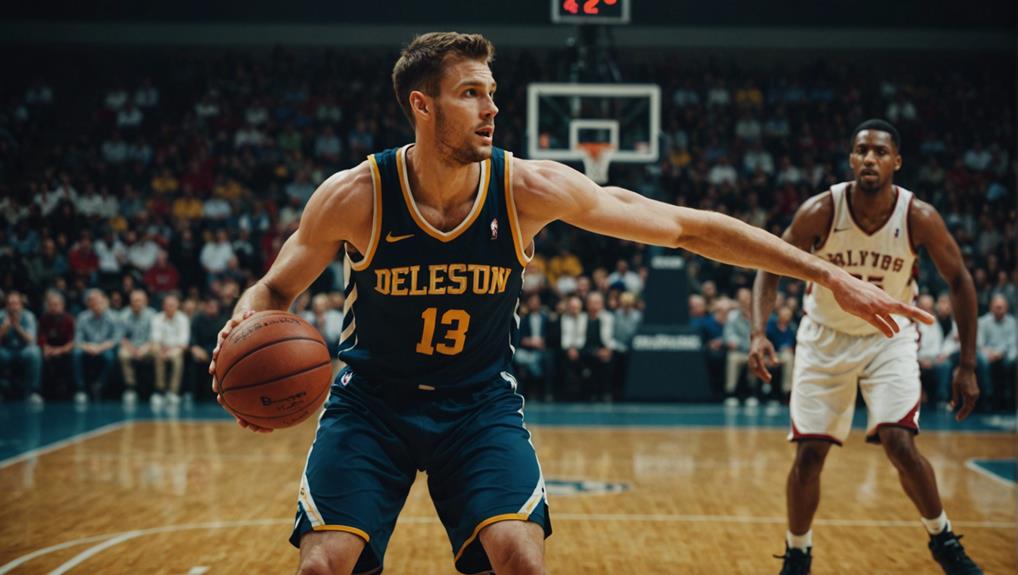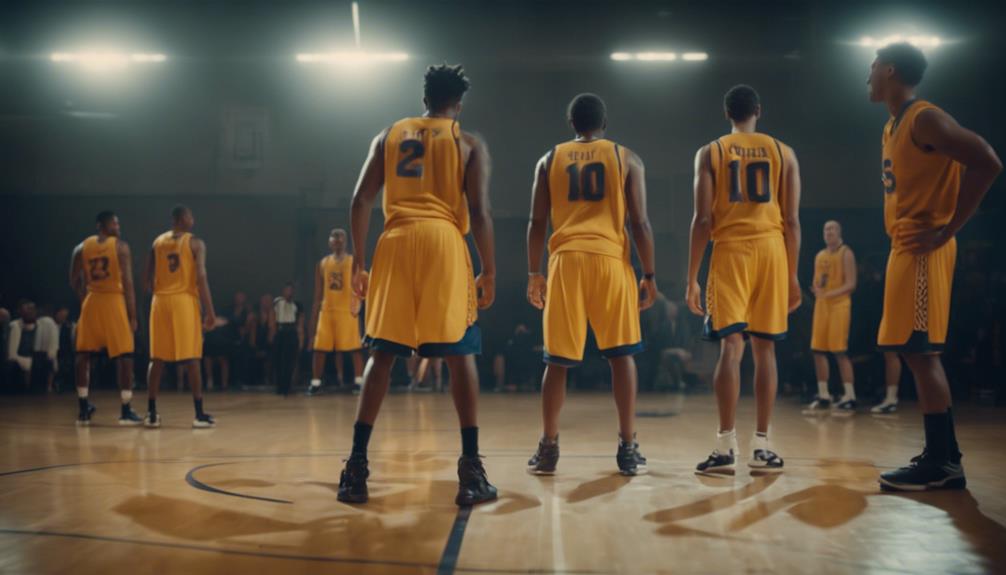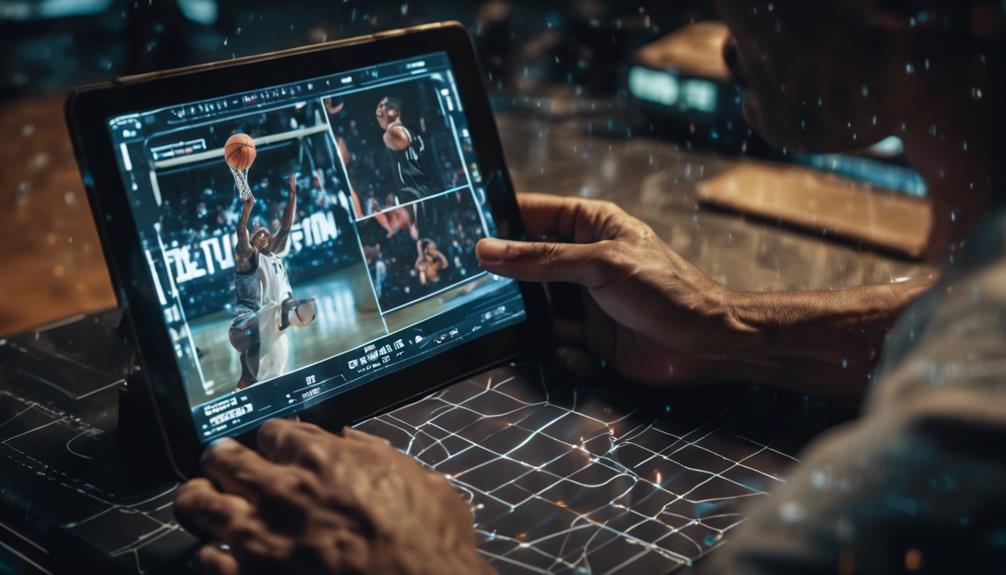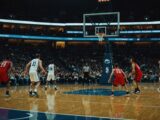
Adapting Defensive Strategies Through Basketball's Evolution
May 15, 2024In basketball's evolution, defensive strategies have shifted from protecting the rim to countering three-point offenses. Teams now prioritize perimeter defense, challenge shooters with closeouts, and adapt schemes to limit open looks. Defenders must embrace versatility, guard multiple positions, and communicate effectively to disrupt opponents' flow. The evolution emphasizes teamwork, quick rotations, and strategic decision-making. Adapting to offensive trends and matchups is essential for success in modern basketball. By prioritizing defensive versatility, teams can counter the ever-changing offensive tactics effectively. Embracing innovation and adaptability in defensive play is key to staying ahead in the game.
Early Defensive Tactics
Early defensive tactics in basketball prioritized protection of the rim and disruption of inside scoring opportunities through physicality and strategic positioning. Defenders in the NBA focused on denying easy baskets near the hoop, forcing opponents to take contested shots from the perimeter. They employed man-to-man coverage, closely monitoring offensive players to limit their scoring options. The emphasis was on preventing high-percentage shots close to the basket, pushing players to take lower efficiency shots from the outside.
As the game evolved, defensive strategies adapted to counter dominant big men and changing offensive tactics. Defenders realized that contesting shots at the rim was essential to success. They worked on closing out on shooters beyond the three-point line, recognizing the importance of guarding the entire court. This shift marked a significant change in defensive approach, leading to a more balanced focus on protecting both the interior and the perimeter of the court.
Zone Defense Revolution
In basketball's defensive evolution, the introduction of zone defense in the NBA in 2001 marked a strategic shift towards protecting the paint and challenging opponents with a more versatile defensive approach.
Zone defense revolutionized NBA defenses by allowing teams to strategically position players to defend against opponents, effectively covering passing lanes and contesting shots. This defensive strategy discourages dribble penetration, forcing opponents to rely more on outside shooting, thereby disrupting their offensive game plan.
Teams like the Miami Heat and Dallas Mavericks demonstrated the effectiveness of zone defense by utilizing it to disrupt high-scoring opponents and secure championships. The evolution of zone defense highlights how teams adapt and innovate to counter the constantly changing offensive tactics in basketball, showcasing the importance of strategic flexibility in the Evolution of Basketball.
As teams continue to refine their zone defense strategies, it remains a pivotal aspect of modern basketball defense, challenging offenses in new and dynamic ways.
Counteracting Three-Point Offenses

To effectively counteract the rise of three-point offenses in modern basketball, defensive strategies must prioritize perimeter defense and strategic closeouts to challenge shooters efficiently. With three-point shooting becoming a central focus in today's basketball offenses, teams are adapting defensively to limit the impact of high-efficiency shots beyond the arc.
Emphasizing strong perimeter defense is vital in disrupting three-point attempts and forcing more challenging shots. Teams are strategically adjusting their defensive schemes to reduce open looks from long-range, recognizing the game-changing potential of efficient three-point shooting.
Analytics are playing a significant role in guiding defensive strategies against three-point offenses, helping teams make informed decisions on rotations, shot contests, and defensive positioning. Successful adaptations to three-point offenses require a combination of individual discipline, effective team communication, and timely strategic adjustments.
Defensive Role Evolution
You need to adapt to the changing demands of basketball defense by understanding how guard positions have evolved, the importance of team defensive tactics, and the increased individual player responsibilities.
Embrace the shift towards more versatile defensive roles that require players to guard multiple positions effectively and execute defensive strategies that disrupt opponents.
Stay attentive to the evolving defensive landscape and be prepared to contribute to your team's success through your defensive prowess.
Guard Position Changes
The defensive evolution of guards in basketball is characterized by a heightened emphasis on perimeter defense and defensive versatility. Guards must excel at defending against quick ball handlers and sharpshooters, requiring them to be agile and adaptive on defense.
One key aspect of this evolution is the ability to switch on screens seamlessly, ensuring there are no defensive mismatches. Additionally, guards are now expected to contest three-point shots effectively, challenging shooters and disrupting offensive plays.
These changes in defensive strategies for guards are a response to the evolving offensive landscape in the NBA, where perimeter scoring has become more prevalent. Guard defenders play an essential role in disrupting the opponent's offensive flow and creating turnovers, showcasing the importance of their defensive contributions.
Team Defensive Tactics
Team defensive tactics in basketball have undergone a significant evolution in response to the demands of modern offenses and the necessity for defensive versatility. The modern game requires defensive roles to be more versatile, moving away from traditional positions towards a positionless approach.
Teams now emphasize defensive versatility to counter the complexities of modern offenses and adapt to changing trends. Defensive strategies have shifted towards team-oriented approaches, focusing on communication, rotations, and collective effort to stop high-value shots and provide effective rim protection.
This evolution in defensive roles reflects the NBA's emphasis on adapting to the fast-paced, high-scoring nature of the game. To succeed in today's basketball landscape, teams must prioritize these team-oriented defensive tactics to remain competitive.
Individual Player Responsibilities
As defensive strategies in basketball have evolved, individual player responsibilities have shifted towards requiring greater versatility and adaptability on the court. This shift is evident in several key ways:
- Versatility: Players are now expected to guard multiple positions effectively, showcasing their ability to adapt to different matchups.
- Switchability: Modern defensive strategies emphasize the need for players to be able to switch and guard different opponents on the court seamlessly.
- Defensive Specialists: Players who excel in disrupting offensive plays and providing consistent defensive pressure are highly valued for their contributions to the team's defense.
These changes highlight the importance of individual defensive roles in today's game, where versatility and switchability are key attributes for success on the defensive end.
Teamwork and Communication Emphasis
Emphasizing teamwork and communication in basketball defense promotes cohesive and proactive player engagement.
In the fast-paced nature of basketball, effective communication among basketball players is essential for successful defensive plays. Players need to constantly communicate on switches, rotations, and help defense to prevent defensive breakdowns and secure stops.
By actively talking on the court, players can disrupt the flow of the opposing team's offense, leading to turnovers and fast break opportunities. Teams that excel in defensive communication and teamwork often gain a competitive edge over their opponents. Coaches stress the importance of players being vocal and connected defensively to achieve collective success.
When players work together seamlessly and communicate effectively, they can anticipate each other's movements, cover for one another, and ultimately strengthen the team's defense. Building a strong foundation of teamwork and communication is key to creating a formidable defense that can adapt to various offensive strategies.
Adapting to Modern Offensive Trends

In response to the evolving landscape of basketball offenses, defensive strategies have undergone significant adaptations to counter the increasing emphasis on three-point shooting and the versatility of modern players.
Teams now prioritize defending against three-point shooting due to its prevalence in modern offenses. To effectively combat this trend, defensive strategies have evolved to include:
- Switching Screens: Teams now employ the strategy of switching on screens to prevent open three-point opportunities and disrupt offensive flow.
- Rotating Quickly: Quick defensive rotations are vital to closing out on shooters and preventing open looks from beyond the arc.
- Contesting Shots Effectively: With the rise of sharpshooters in modern offenses, effective shot contests have become essential in limiting the efficiency of three-point shooting.
Coaches emphasize defensive versatility and adaptability to match the fluidity of modern offensive schemes. Effective defensive communication and decision-making play a pivotal role in countering the strategic advancements in modern offenses.
Conclusion
As basketball has evolved, so too have defensive strategies. From the early pioneers of man-to-man defense to the revolutionary zone defense tactics, teams have constantly adapted to counteract new offensive threats.
The key to success lies in teamwork and communication, as players must work together like a well-oiled machine. Just like a puzzle, each piece of the defense must fit perfectly to shut down the opponents.
So, keep evolving, keep communicating, and keep locking down that defense!


